Using Grok to create a marketing funnel is like having a supercharged co-pilot for your strategy. You can ask it to help you brainstorm funnel stages, generate ad copy, write email sequences, or even summarize audience insights in seconds. Instead of juggling a dozen tools, Grok helps streamline the whole process from top-of-funnel awareness content to bottom-of-funnel conversion tactics. Whether you’re crafting lead magnets or optimizing landing page messaging, it’s like having a smart assistant who knows marketing and never gets tired.
In this tutorial, you’ll learn how to define funnel stages, map content types to each stage, identify user intent at each stage, spot weak points or gaps, and turn the funnel into a content plan.
By the end of this tutorial, you’ll know how to:
- Set up Grok 4
- Define the funnel stages
- Map content types to each stage
- Identify user intent at each stage
- Spot weak points or gaps
- Turn the funnel into an action plan
Let’s get right into it!
Set up Grok 4
Access Grok and log in to a paid account to access Grok 4.
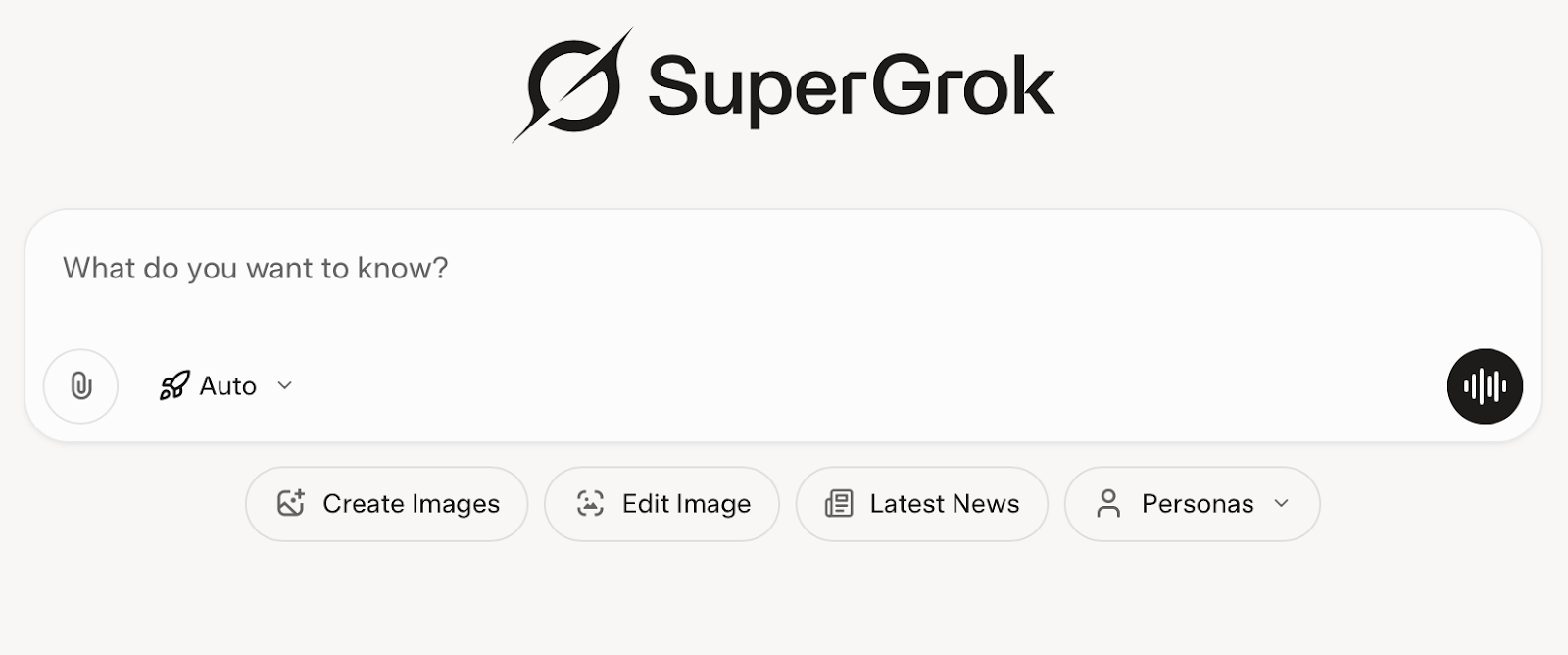
Choose ‘Export’ in the model selection drop down.
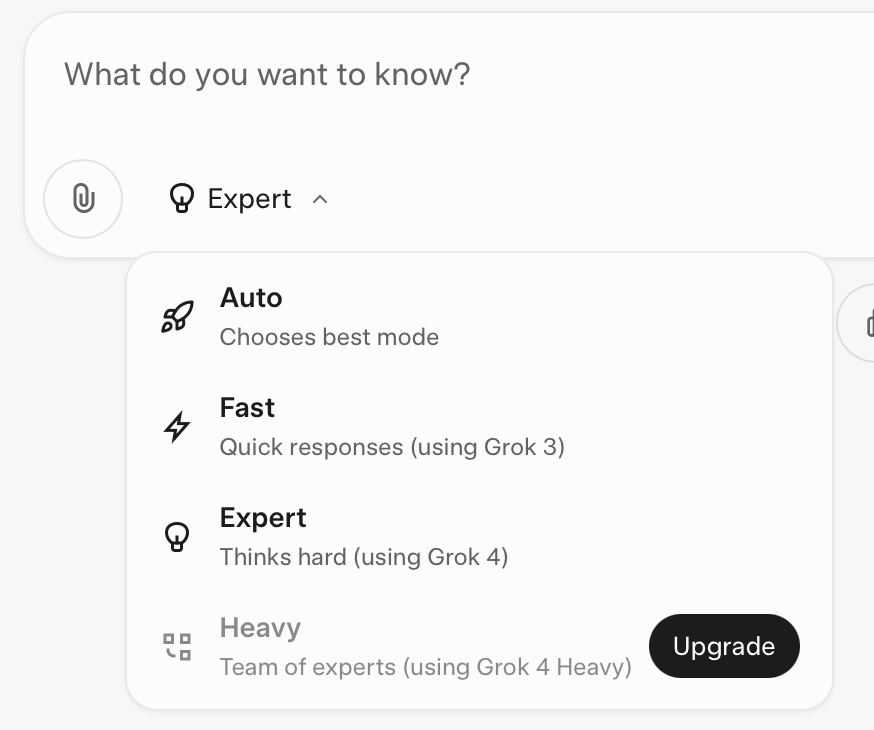
We are now ready to use Grok 4 to create a marketing funnel.
Define the funnel stages.
Before you can effectively market a product, you need to understand how to guide potential customers from first hearing about it to actually making a purchase. That’s where defining your funnel stages comes in. Each stage represents a different mindset your audience might be in, whether they’re just discovering your brand or ready to buy. By clearly outlining these stages, you can fine-tune your messaging and the strategy to convert people into customers.
Hence, the first prompt should introduce your product/service to Grok. The goal should be to drive leads, sales, and sign-ups. Specify your audience by providing age, demographics, and other details.
Copy/paste the following prompt. Fill in your details and let the Grok whip up its magic.
Prompt:
You’re a marketing strategist. I’m trying to map out the funnel for [product/service]. The goal is [e.g,. Drive leads, sales, and sign-ups. The audience is [brief description]. Based on this, define the key funnel stages and what each one should focus on.
Example:
You’re a marketing strategist. I’m trying to map out the funnel for [painting tools, especially acrylic colors, and other painting tools]. The goal is to drive leads and sales. The audience is [Ages 14–55, mostly singles, skewing slightly female—emotionally driven, social, and love-thoughtful gestures. Encourage casual, feel-good gifting to friends, family, or loved ones—simple ways to make someone’s day. ]. Based on this, define the key funnel stages and what each one should focus on.

Let’s instruct Grok to draw a market funnel and make a structure based on the prompt mentioned above. Grok doesn’t have image generation skills yet. So we will resort to a very rudimentary diagram.
Prompt
Can you create a market funnel diagram with color and style? Use the structure you generated in the previous prompt and provide a clearer overview of everything.
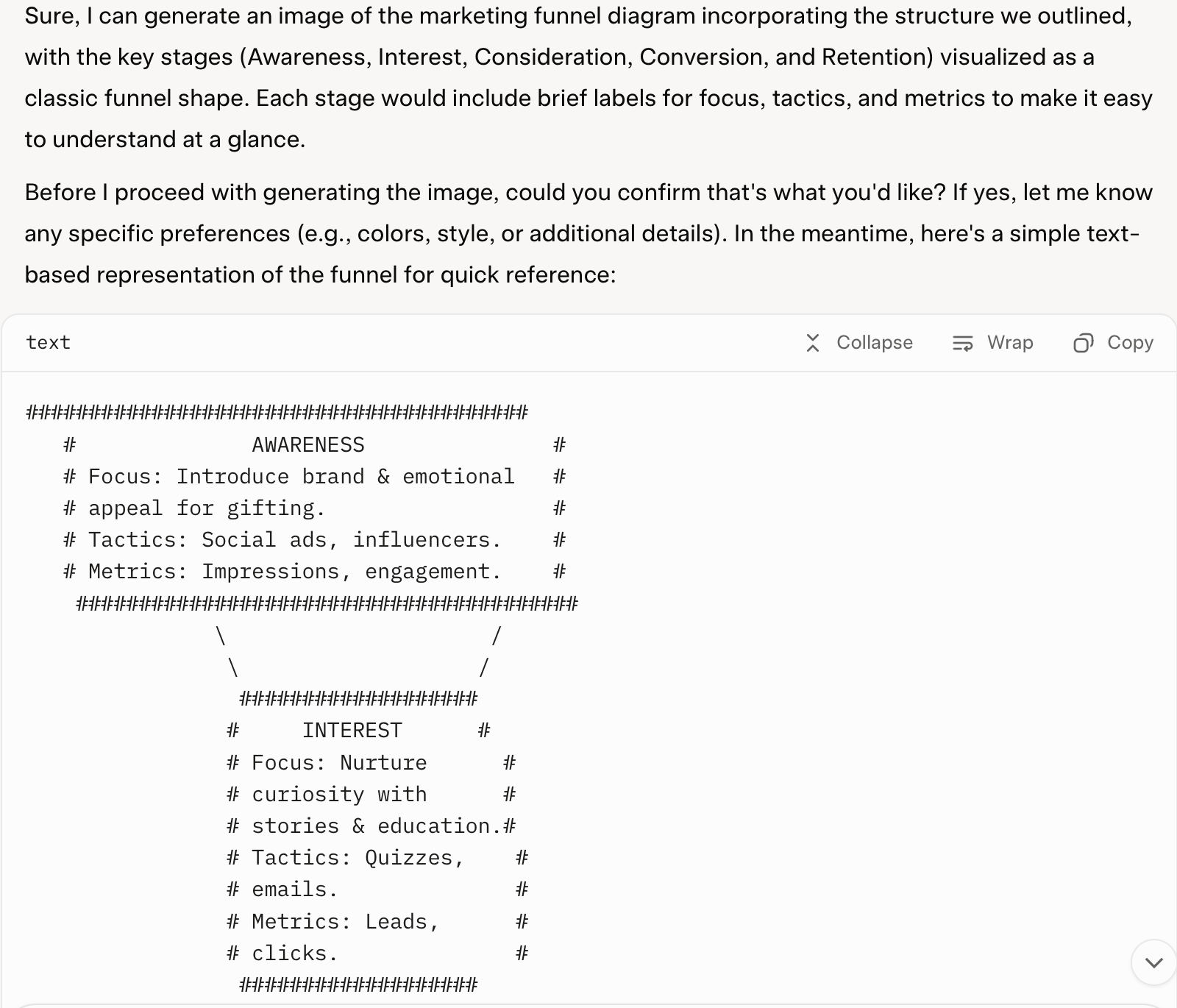
Map content types to each stage
Once you’ve defined your funnel stages, the next step is choosing the right type of content for each one. Different stages call for different messages. Some attract attention, others build trust, and some drive action. By mapping content to each stage, you make sure you're speaking to your audience in a way that fits where they are in their journey.
Prompt:
For each funnel stage, suggest 2–3 types of content or assets that would be most effective. Include examples or formats where possible.
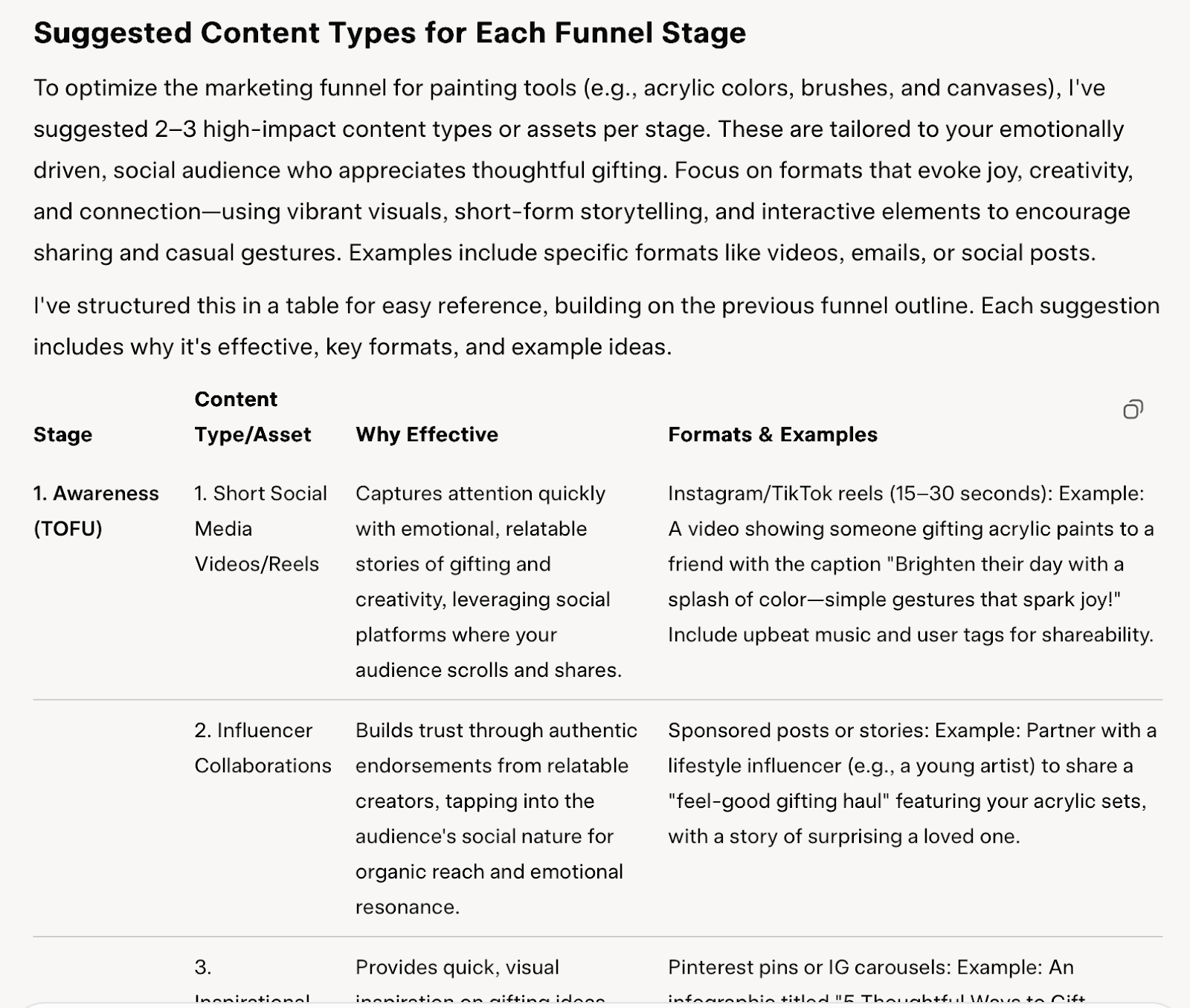
That came out amazing. You can save it as a PDF too. We will do this later by asking Grok to put everything in a PDF.
Identify user intent at each stage.
To make your funnel actually work, you need to know what people are thinking at each stage. Are they just curious? Comparing options? Ready to buy? When you understand their mindset, it’s way easier to speak their language and guide them forward. Start by asking about the mindset, questions, objection a user might have at each stage.
Use the following prompt to understand user intent at each stage.
Prompt:
Summarize the mindset, questions, and objections a typical user has at each funnel stage. Include one clear message that each stage should communicate.
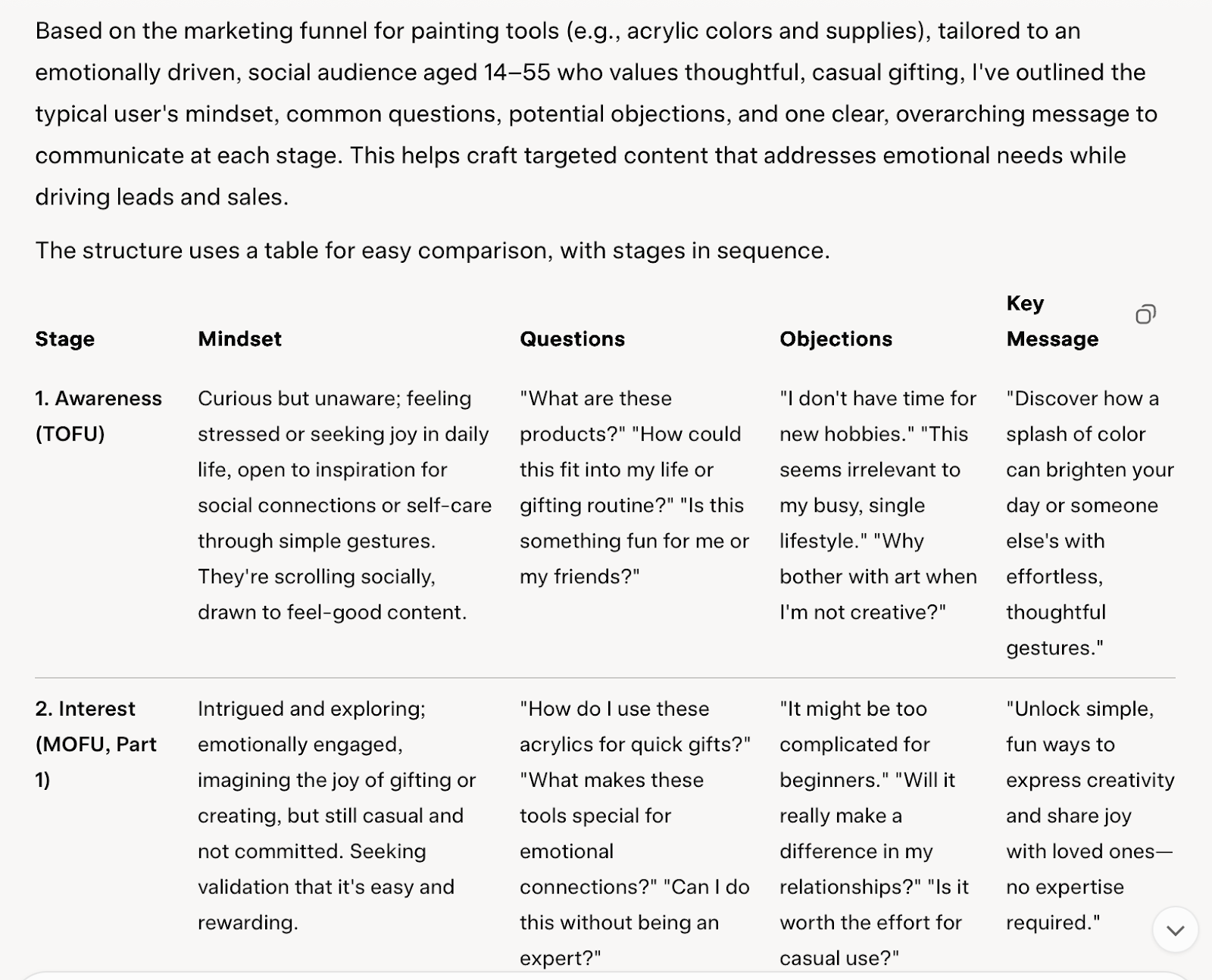
Grok created a table that shows us the mindset, questions, objections, and messages each user might have at any stage. That’s seems quite useful.
Next, we will see whether Grok can identify weak points and gaps in the funnel.
Spot weak points or gaps
Sometimes your funnel just isn’t hitting right, and you don’t know why. Maybe people click but don’t stick around, or they bounce before buying. The key is spotting where things fall flat so you can tighten things up. Let’s look at how to find those weak points and fix what’s not working.
For this, use the following prompt to figure out what is not working.
Prompt:
Here’s my rough funnel: [insert funnel summary or bullet points]. Review it and point out anything missing, unclear, or weak. Suggest what to fix.
Example:
Here’s my rough funnel: [
Awareness
Get on their radar with inspiring content. Think short painting videos, beginner tips, or creative reels. You're reaching people who are just getting into art or thinking about picking up a brush.
Interest & Consideration
Help them explore. Share tutorials, product guides, and bundles like “starter kits.” Show real customer artwork and reviews to build trust.
Conversion
Make it easy to buy. Offer discounts, beginner bundles, or free shipping. Keep the checkout smooth and hassle-free.
Loyalty & Advocacy
Keep them coming back. Send helpful tips post-purchase, invite them to share their art, and reward loyalty. Happy artists love to spread the word.].
Review it and point out anything missing, unclear, or weak. Suggest what to fix.
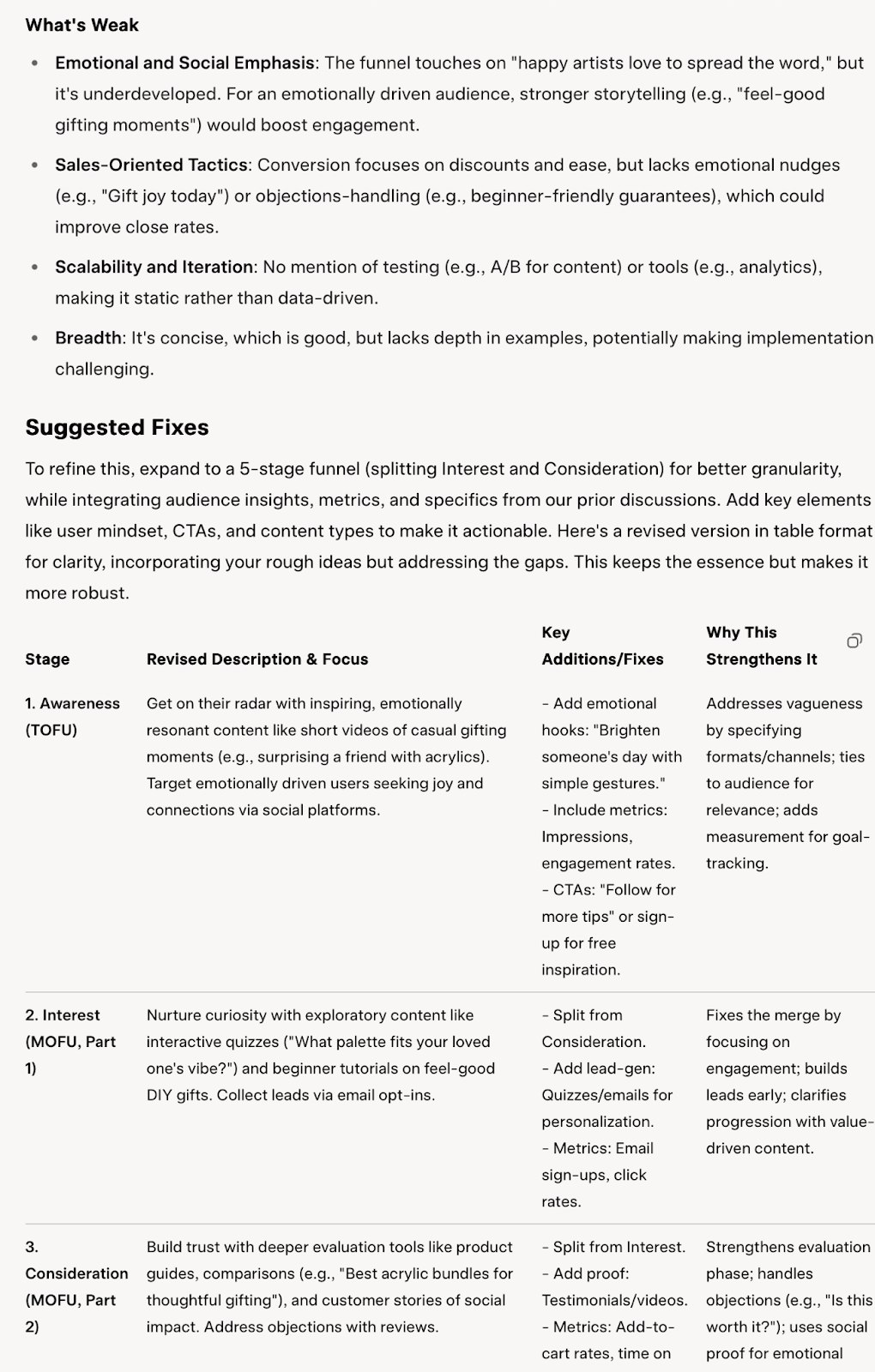
That’s quite a detailed overview of the weak spots and suggested fixes.
Now let’s put everything into an action plan.
Turn the funnel into an action plan.
Having a funnel is great, but it won’t do much unless you turn it into something you can use. That means getting clear on what to do at each stage and setting up the content, tools, and touchpoints that move people forward. Let’s break it down into a simple action plan you can start using right away by using the following prompt.
Prompt:
Turn the funnel you created into a content plan. List what I should create, for which stage, in what order. Keep it simple and actionable.
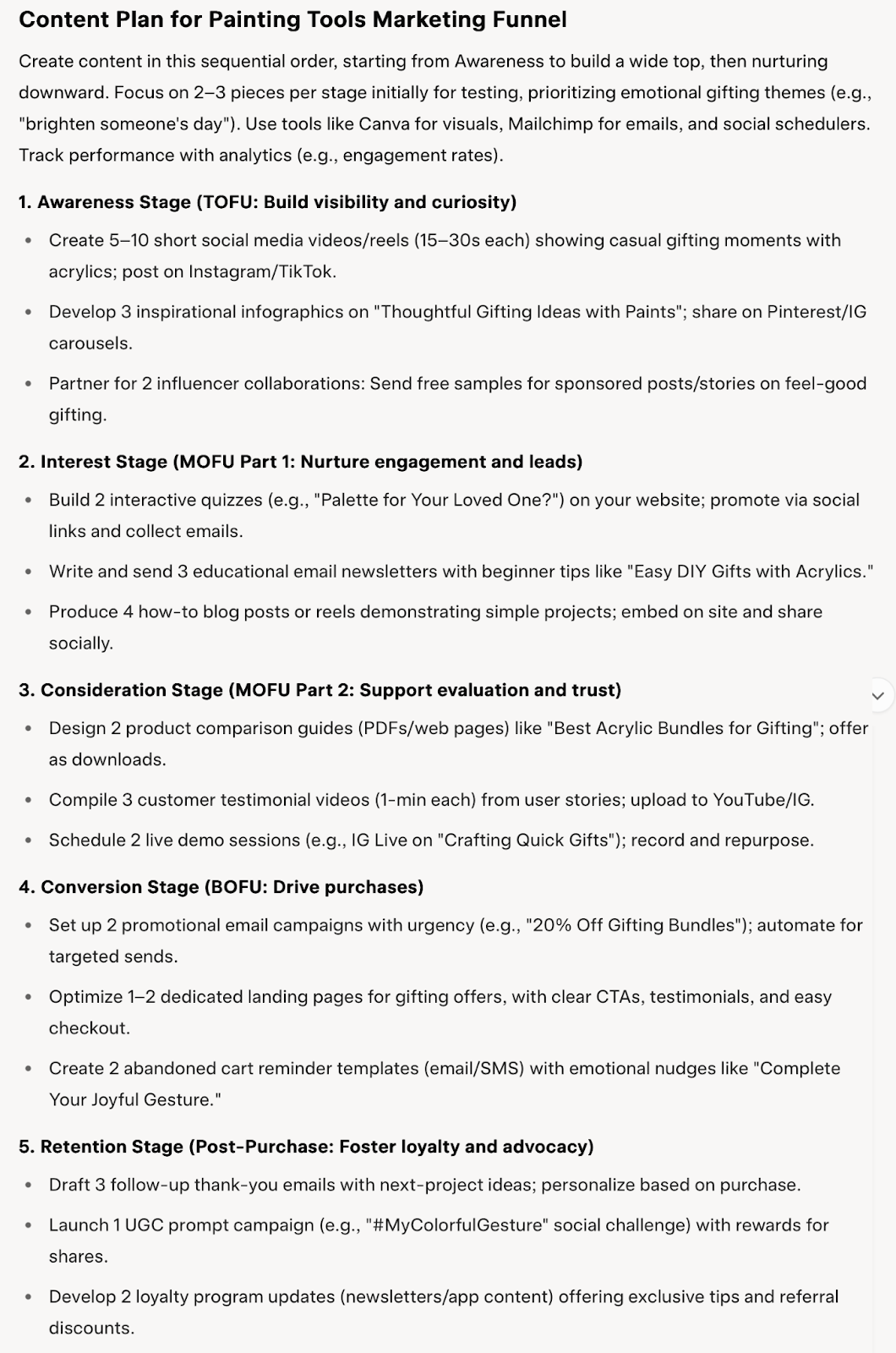
That’s awesome. We can follow this action plan as a test case. Every item is to the point. You can also use this whole thing to tweak your own marketing funnel.
If you want to put everything into a PDF, download all the tables by clicking the three-dot button at the end of each prompt and selecting ‘PDF.’
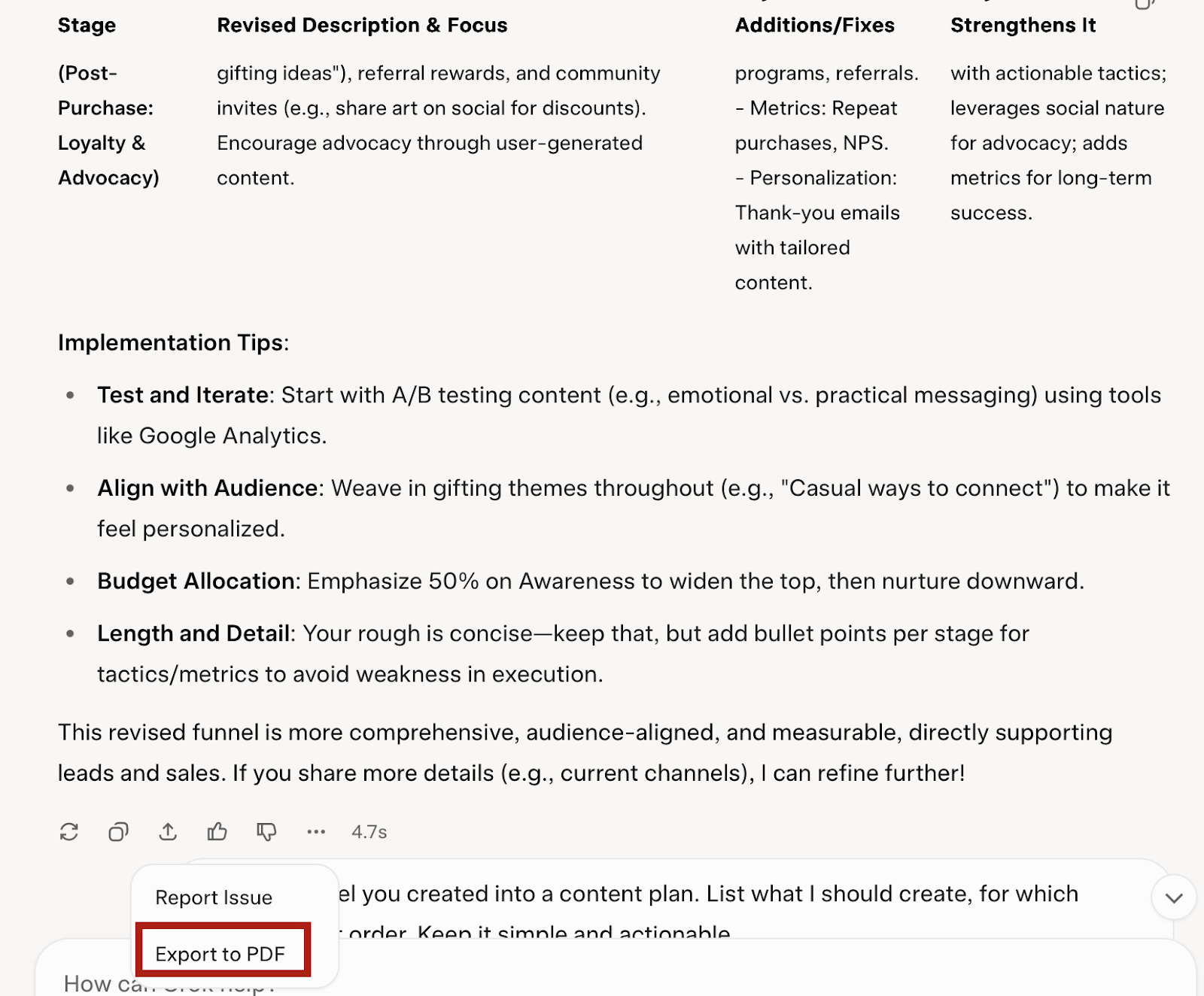
That’s it for this tutorial, AI students! It’s all about clever prompting and following the guidelines. Once you get to know what you want, you can convert it into a prompt. Be super specific and make a list of what you require. Once you figure it out, you can become the next superstar!
.avif)
.png)



